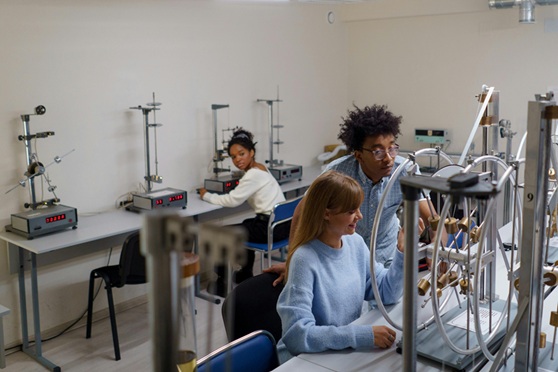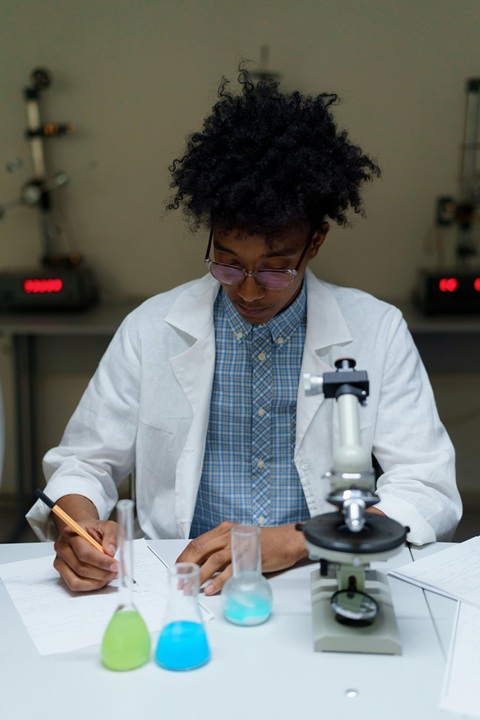Atal Tinkering Labs
Education is the foundation of a nation’s progress, and fostering innovation in young minds is key to shaping a brighter future. The Indian government, through the Atal Innovation Mission (AIM), launched the Atal Tinkering Labs (ATLs) initiative in 2016 to instill creativity, problem-solving skills, and an innovative mindset in students. By establishing hands-on learning spaces in schools, ATLs aim to bridge the gap between theoretical education and real-world applications.
The recent announcement to set up 50,000 new ATLs across government schools in India has brought this initiative into the spotlight. While it holds immense potential to revolutionize education, challenges such as teacher training, infrastructural readiness, and funding allocation need attention.

Understanding Atal Tinkering Labs (ATLs)
Atal Tinkering Labs are dedicated innovation workspaces set up in schools to encourage STEM (Science, Technology, Engineering, and Mathematics) education through hands-on experience. These labs provide students with tools like 3D printers, robotics kits, IoT (Internet of Things) devices, and mechanical tools to help them experiment, build prototypes, and develop a problem-solving attitude.
Key Features of ATLs
Innovation-Friendly Infrastructure: ATLs are equipped with advanced tools that allow students to explore modern technology concepts.
Encouraging Experimentation: Students from Class VI to XII can use these labs to develop innovative projects.
Fostering Entrepreneurial Mindset: By solving real-world problems, students gain entrepreneurial skills and creativity.
Skill Development: ATLs focus on building computational thinking, adaptive learning, and hands-on experimentation.
Since its launch, ATLs have empowered students to apply their knowledge practically rather than just relying on textbooks.

Expansion Plans: 50,000 New ATLs in Government Schools
The Indian government, under the 2024 Union Budget, announced an ambitious plan to establish 50,000 new ATLs in government schools over the next five years. This initiative will be funded by the Ministry of Education and aims to expand ATLs beyond urban areas, ensuring that students in rural and underserved regions also benefit from innovation-driven learning.
Selection Criteria for Schools
With over 1 lakh government secondary and senior secondary schools, the government has outlined a selection strategy for the new ATLs. Schools will be chosen based on:
Infrastructure Readiness: Schools with basic facilities for setting up a lab will be prioritized.
Regional Distribution: ATLs will be set up across all states and union territories to ensure nationwide coverage.
Collaboration with Existing Networks: Priority will be given to schools under Kendriya Vidyalayas (KVs) and Jawahar Navodaya Vidyalayas (JNVs).
Each selected school will receive a ₹20 lakh grant for setting up and maintaining the ATL. The allocation may increase in the future based on demand.
Impact of ATLs on Education
Since their inception, ATLs have had a transformative impact on Indian education. According to third-party studies conducted in 2024:
74% of ATL-equipped schools reported higher student interest in STEM education.
84% of students engaged in ATL activities developed an interest in research and innovation.

Some key benefits of ATLs include:
Boosting Practical Learning
Traditional education in India has been theory-heavy, with limited exposure to practical applications. ATLs encourage students to apply textbook concepts to real-world scenarios, making learning engaging and interactive.
Bridging the Urban-Rural Gap
By expanding ATLs to rural schools, students in underserved areas will gain access to advanced learning tools, creating equal opportunities for innovation across India.

Promoting STEM Careers
India has a rising demand for skilled professionals in AI, robotics, and data science. ATLs create a strong pipeline of future engineers, scientists, and entrepreneurs.
Encouraging Student-Led Innovations
Many students from ATL schools have participated in national and international competitions, showcasing their innovations. ATLs have helped students build drones, smart farming solutions, and healthcare devices.
Challenges in Implementing ATLs
While the initiative is promising, certain challenges must be addressed to ensure its successful expansion and effectiveness.
Teacher Training and Upskilling
One of the biggest hurdles is the lack of trained teachers who can effectively guide students in using ATL equipment. Many teachers rely solely on textbooks and struggle with STEM-based learning approaches.
Infrastructure Gaps
Although schools will receive funding, many lack basic infrastructure like stable electricity, high-speed internet, and sufficient lab space to accommodate an ATL.
Sustainability of Labs
While initial funding is provided, long-term maintenance and upgrades are crucial. Schools must ensure that ATL resources are regularly updated to keep pace with technological advancements.
Awareness and Accessibility
Many rural schools are unaware of the application process for ATLs, leading to slower adoption. The government must conduct awareness campaigns to encourage participation.
Steps Taken to Overcome Challenges
Recognizing these issues, AIM has introduced several measures to enhance ATL effectiveness:
Teacher Training Programs: AIM conducts TinkerBox Teacher Training Workshops to upskill teachers.
ATL Hub-and-Spoke Model: Schools with limited infrastructure will share ATL resources with nearby schools to maximize reach.
Private Sector Collaboration: Partnerships with tech companies and universities will help sustain the labs.
Encouraging More Girls in STEM: Special initiatives are being launched to increase female participation in ATL programs.
These steps will help ATLs reach their full potential and create a sustainable innovation ecosystem.

Future of ATLs in India
With India’s growing emphasis on innovation, entrepreneurship, and self-reliance, ATLs will play a crucial role in shaping the future workforce. Some expected advancements include:
Integration with AI & Coding: Future ATLs may incorporate AI-driven learning and advanced coding modules.
Expansion Beyond Schools: Community-based ATLs could be set up to provide learning opportunities to all age groups.
International Collaborations: Partnerships with global tech giants may help in bringing world-class STEM education to Indian students.
ATLs have the potential to transform India’s education system, ensuring that every child, regardless of location or background, has access to hands-on, innovation-driven learning.
Conclusion
The Atal Tinkering Labs initiative is a game-changer in India’s education sector. By fostering a culture of innovation, these labs empower students to think critically, experiment, and build solutions for real-world problems. With 50,000 new ATLs planned, India is taking a significant step towards becoming a global leader in STEM education and innovation.
However, for ATLs to achieve their full impact, the government, educators, and private sectors must work together to address challenges, ensure sustainability, and provide continuous learning opportunities. If implemented effectively, ATLs will not just transform classrooms but will shape the future innovators of India.
Disclaimer
This blog is for informational purposes only and is based on publicly available data regarding Atal Tinkering Labs. While every effort has been made to present accurate and up-to-date information, policies and initiatives may evolve over time. Readers are advised to refer to official government sources for the latest updates on ATLs. The author and publisher are not responsible for any decisions made based on the content of this blog.


Recent Comments